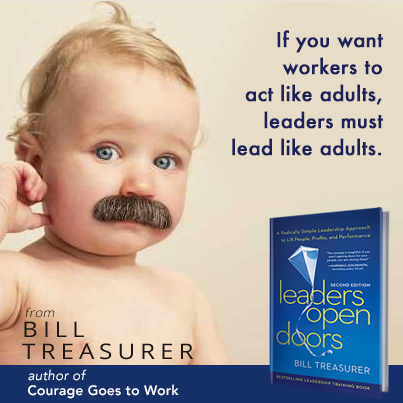The Blind Spots Identified
Guest post by Jim Haudan and Rich Berens
We have identified five leadership blind spots that perpetuate disengagement and indifference. They do the exact opposite of creating thriving, innovative workplaces that turn customers into advocates and fans. Let’s take a quick look at each one before each chapter breaks them down further and answers the key questions leaders need to ask themselves in order to see things as their employees do.
Leadership Blind Spot #1: Purpose
Common Misconception. Purpose matters, but it doesn’t drive our numbers.
The Basics. While there was a time when employees were only paid to complete a specific set of tasks, there is way more to it than that today. Many leaders are starting to embrace the concept of purpose but fail to actually run their businesses in a purpose-driven way.
The Question We Will Answer. As leaders, how can we put purpose at the center of the way we operate our business and achieve exceptional financial results because of it?
Leadership Blind Spot #2: Story
Common Misconception. We have a compelling story to tell that our people care about.
The Basics. Most organizations have a semi generic vision statement, accompanied by what seems like too many slides to outline their strategy for what winning looks like for the organization. Leaders believe they have a compelling story to tell, but when seen through the eyes of the employee, the complete opposite is often the case.
The Question We Will Answer. What makes a strategy story compelling, and how can we craft one for our people?
Leadership Blind Spot #3: Engagement
Common Misconception. Rational and logical presentations engage the hearts and minds of people.
The Basics. In many organizations, a tremendous amount of money is spent creating strategies to win. Those strategies then get communicated using PowerPoint presentations, road shows, or town hall meetings—but things seemingly get stuck. Employees fail to connect with the strategy, leaders are frustrated about the lack of progress, and managers just try to hold the ship together.
The Question We Will Answer. How do we move from presentations to conversations and create genuine engagement in strategies in the business?
Leadership Blind Spot #4: Trust
Common Misconception. People will not do the right thing unless you tell them what to do and hold them accountable to do it.
The Basics. Companies want and need to deliver great service to differentiate themselves, and the common belief is that the best way to deliver this is to create tight processes, scripts, and routines that minimize variability—to hold people and their behaviors to a strict policy and uniform standards. But that approach will never create consistent yet unique, differentiated, and personalized experiences that lead the market.
The Question We Will Answer. How can we trust and scale the unique human judgment, discretion, and care of our people, while at the same time having firm standards that we all share?
Leadership Blind Spot #5: Truth
Common Misconception. My people feel safe telling me what they really think and feel.
The Basics. In many leadership teams, what people really think often gets discussed in the hallways and bathrooms and by the watercooler rather than in meeting rooms. People don’t feel safe telling the truth because they don’t think it is smart or safe to do so. Many leaders believe that to be effective and successful, they need to be smarter than the next guy, fight for their area of the business, and not show vulnerability. This mentality creates lack of trust, collaboration, and common ownership for a greater goal—and ultimately greatly slows down execution speed.
The Question We Will Answer. What can we do as leaders to make it safe for our people to tell the truth and act on those truths to make the business better?
About Jim Haudan
Jim Haudan is Co-Founder and Chairman of Root Inc. Root Inc., the organizational change expert on helping companies create leadership alignment, execute strategies and change successful, build employee engagement, and transform businesses. He is a sought-after business presenter who has spoken at TEDx BGSU, Tampa TEDx, and The Conference Board. His latest book, What Are Your Blind Spots?: Conquering the 5 Misconceptions that Hold Leaders Back is co-authored with Rich Berens is CEO and Chief Client Fanatic of Root Inc. The book equips readers with the tools needed for a personal leadership reset. You’ll discover how to increase engagement, productivity, and growth in your own organization.
About Rich Berens
Rich Berens is CEO and Chief Client Fanatic of Root Inc, and has helped align leaders at Global 2000 organizations to drive strategic and cultural change at scale. He is a noted speaker on the issues of, transformation, and how to create lasting change and has authored articles for numerous publications and blogs. Under Rich’s leadership, Root has been listed among the Great Place to Work® Institute’s top 25 places to work, been named to the Inc. 5000 fastest-growing companies list, and experienced 10 years of consecutive growth. His latest book, What Are Your Blind Spots?: Conquering the 5 Misconceptions that Hold Leaders Back is co-authored with Jim Haudan is Co-Founder and Chairman of Root Inc.







